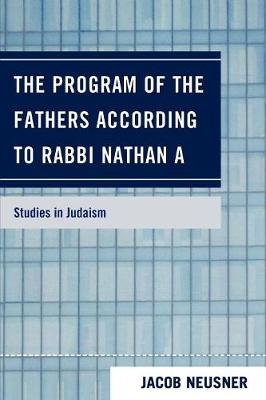Of the score of documents in the Rabbinic canon that reached closure in late antiquity, the first six centuries of the Common Era, the Fathers According to Rabbi Nathan Text A (Abot de Rabbi Natan, henceforward: ARNA) proves the most difficult to classify in the canonical context. It presents a challenge because it is different in its indicative traits from any other in the Rabbinic documents of its period. In the conclusion, (Chapter Forty-Five), Neusner explains what is at stake for the documentary hypothesis of the Rabbinic canon in that observation. Jacob Neusner follows the procedures that have guided his prior work in situating Rabbinic documents within their formal context and in ordinal sequence in their larger canonical setting. After introducing the two documents compared here, Abot and ARNA, Neusner sets out a prologue explaining the analytical procedure. Then, he takes up a detailed probe of all the evidence and produces a hypothetical category-system of forms. This is exposed through a system of visual indicators, which Neusner defines and explains in the prologue to Part One. Part Two in two chapters follows. The results of Chapter Forty-Four, where Neusner tests the givens of the documentary hypothesis against the facts of ARNA and Abot, yield the concluding chapter, Chapter Forty-Five, where Neusner surveys the results for the entire document to see what rules govern in the context of the documentary hypothesis. These call into question the universal applicability of that hypothesis. There is no documentary program that derives uniquely from ARNA in canonical context.
- ISBN10 0761847979
- ISBN13 9780761847977
- Publish Date 10 October 2009
- Publish Status Active
- Publish Country US
- Imprint University Press of America
- Format Paperback
- Pages 416
- Language English
